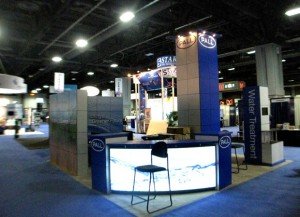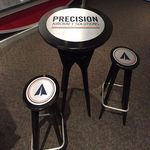Trade Show Managers, Had Enough Abuse? Bring these 10 Docs!
It’s set-up day at a show, you’re pressed for time. Then you realize that apparently the tear down crew at the last show forgot to re-pack the assembly instructions for your trade show booth.
You lose half a day and hundreds of dollars. The exhibit company that made your display is closed for the day, and you need a new set of plans.
You’re a good trade show manager. You paid for all your show services in advance. But on-site at the show there’s no record of your payments for anything.
Naturally, they want you to pay the highest cost for everything, because you can’t prove you already ordered them.
You’ve done this show for years. Suddenly, the show manager informs you that your exhibit (the same one you’ve used for the last two years) violates height restrictions.
You’re in deep Bandini because you failed to review the show manual. Apparently, they changed the rules this year!
Any of these situations can happen to the best of us when we’re not on top of our game. And the sad thing is, all of these situations were preventable.
All you need to do is plan properly and prepare effectively. In each case, a copy of the show forms would have prevented hassles. A little preparation would have prevented the problems.
To keep you from being one of the unlucky ones, I’m encouraging you to keep the following documents with you.This way, you’ll have them handy when potential problems arise.
1. Show Manual:
By thoroughly reviewing this manual before each show, you’ll avoid a hornet’s nest of problems.
2. Support Team Contact Information:
Email addresses can also be helpful. Many shows move in or set up late in the day or on weekends. You can’t count on being able to contact any of these suppliers during a regular 9-5 day.
3. Records Of Payments Made:
Photocopy or scan every check you use to pay for your show services. Have these copies on hand in the event there are no records on-site, or those records say services haven’t been paid for.
4. Independent Contractor Request Letter:
You may have chosen to set up your exhibit yourself. Or else may be you’re using your own I&D firm. If so, bring a copy of the letter you sent to show management informing them of your intentions.
This will help prevent problems in case there are questions or conflicts on the show floor.
5. Service Order Forms:
Having copies of the checks that paid for them are good. Having copies of the forms showing you ordered each show service is even better.
Records do get lost or misplaced. Having back ups will allow you to prove you ordered in advance. That way you’ll avoid being charged the significantly higher floor order rate.

VK-1951 SEGUE Backlit Portable Display with Tension Fabric Graphics, Wings, and Modified MOD-1267 Pedestal
6. Booth Space Agreement:
This is probably the most important of all. This document is proof positive that confirms your location (in case they try to move you). It also shows the charges (in case they try to bill you) and both your own—and the show’s—obligations for a successful show.
7. Exhibit Sheet or Shipper’s Summary:
Having a copy of these papers shows all the in and out arrangements that made prior to the show. It should include the origin and destination for what you shipped, and how many pieces shipped.
With it, you’ll know where your exhibit is at all times, and who to contact if it’s not in the right place.
8. Crate Inventory:
Keep a complete and constantly updated list of the contents of each crate. Then it will be simple to identify missing pieces (or even missing crates).
The sooner you know something’s not where you expect, the sooner you can work on getting a replacement. If you use a system for marking your crates, explain that system in your notes.
9. Set-Up Instructions:
I’ve heard from many trade show managers who wished they’d packed a spare set of instructions. They help avoid the hassles when a careless tear-down crew forgets to pack the originals.
It’s cheap insurance to keep an extra set in your show binder.
10: Photos:
At your next show, take several pictures of your exhibit. If there are tricky parts to the assembly, take pictures of that too.
This will save time and money when the set-up crew is attempting to assemble your exhibit.
Having the physical pictures in your show folder is a good idea. An even better idea is to keep a set on your phone or tablet, for immediate access. This will also give you the ability to zoom in on any confusing pieces.
Even the best trade show manager makes mistakes. Creating a successful show can be a long, potentially treacherous, path.
With these ten documents on hand, you’ll avoid situations that could cost you dearly in terms of time and money.
We’re sensitive to that here at American Image Displays. It’s part of our mission to help you save both time and money when planning your next exhibit.
Working with all the top names in modular displays, we can create outstanding exhibits that are cost-effective, easy to set up and light weight (to save on shipping).
To find out more, call us at (425) 556-9511 or email [email protected].
For more, check out what makes your strategy work or check out how to fine tune your trade show strategy.


